In this post, learn how beef fat can be rendered to make a nutritious, multi-purpose cooking oil. This process is quick and simple, requiring only a few minutes of prep and some leftover animal fat (beef, pork, etc).
Each year, we order our meat in bulk and purchase 1/2 of a grass-fed cow. With that order, we end up with a lot of steaks in the freezer. While that sounds fancy, we generally get what the butcher gives up. You can put in some requests, but you always get a wide variety of cuts.
This actually is my preferred way, because we end up saving a lot of money. I also love that we will always have meat on hand to make our family favorite meals like burritos with homemade tortillas, pumpkin chili, stuffed bell peppers, shepherd’s pie, and homemade hamburger helper, just to name a few.
One tricky part of purchasing our meat like this is that you may end up with cuts you aren’t quite as familiar with. This doesn’t bother me, because I love a good cooking challenge.
And when that delicious beef has chunks of fat on it, well, save it for rendering. You already paid for that good quality meat – you might as well get the most out of it!
With a little prep work and some slow cooking, you can make a delicious and healthy oil for cooking or baking.
Rendered beef fat is called tallow, and it is delicious, sustainable, economical, and healthy!
Tips:
- This is best cooked low and slow for a few hours. If your temperature is too high, you can expect it to burn.
- When you are cooking down the fat, there will be some meat that will not render out. Don’t expect the pot to be completely melted. The slower the fat is cooked, the whiter and more neutral-smelling it will be. You can cook it low for two hours, or even at a slightly lower temperature for 6-8 hours.
- It is best to use the whiter, more neutral tallow for baking and pastries, as there is less beef flavor to interrupt the flavor of your baked good. Less white tallow, that may have been rendered more quickly, works really well for most other cooking, as it offers a hearty beef flavor to complement your dish.
This post contains affiliate links, which means I make a small commission at no extra cost to you. See my full disclosure here.
Tools you may need:
Knife
Cutting board
Large pot
Benefits Of Rendered Beef Fat
Rendered beef fat, or tallow, is an amazing cooking oil. It has a higher smoke point than many vegetable oils, and it’s a sustainable way to use something that normally would just be tossed away. Also, it contains minerals and vitamins like A, D, E, and K.
What is rendering beef fat or tallow?
It is the process of liquifying, straining, and storing fats that can later be used for cooking. Rendered beef fat is the perfect cooking medium for sautéing.
At what temp does beef fat render?
Beef fat renders at 130-140°F (54-60°C). This is a process you want to take slow, so maintain this temperature while cooking for several hours.
How do you know if your fat is rendered?
It will be a nice yellowy white liquid. Once it is strained and allowed to cool, it will be creamy white.
How can you use rendered fat?
Use rendered fat for cooking, sautéing, frying, and even in pastries. You can also use it to make candles, soaps, body products, and to keep your cast iron in tip-top shape.
How To Render Beef Fat
Remove excess fat from your beef (or pork) using a knife and cutting board. Feel free to dive in there bare-handed and keep it simple.
Cut fat into 1-2 inch portions.
Place into a large saucepan or pot and place over low heat for a few hours, stirring occasionally. You want the temperature to hold around 130-140 degrees. The fat should be a yellow color. If it is starting to turn brown, then the heat may be too high.
After the beef has rendered, while it is still hot, carefully pour the tallow through a fine mesh strainer into a container. Not everything will completely melt. There will be some pieces of meat and other bits that don’t render.
Allow to cool in the refrigerator.
Now your tallow is ready to cook with!
Store in the refrigerator in an air-tight container (I like mason jars for this) for 2-3 months.
Find More From-Scratch Recipes
- How To Make Sour Cream From Raw Milk
- Lacto Fermentation: Guide To Fermenting Vegetables
- Einkorn Biscuits
- Round Steak With Caramelized Onions And Mushrooms
- How To Make Raw Milk Yogurt In The Instant Pot
How To Render Beef Fat

Ingredients
- 2-5 pounds beef fat, pork fat will also work
Instructions
- Remove excess fat from your beef (or pork) using a knife and cutting board.
- Cut fat into 1-2 inch portions.
Place into a large saucepan or pot and place over low heat for a few hours, stirring occasionally. - After the beef has rendered, while it is still hot, carefully strain the tallow through a fine mesh strainer into a container.
Allow to cool in the refrigerator.
Now your tallow is ready to cook with!
Notes
- Store in the refrigerator in an air-tight container (I like mason jars for this) for 2-3 months.
- You want the cooking temperature to be around 130-140. Too hot and it will burn.
Nutrition
Nutrition information is automatically calculated, so should only be used as an approximation.
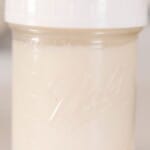
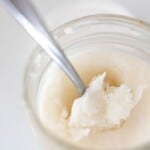
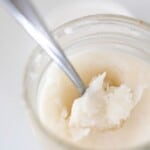
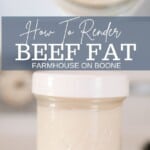
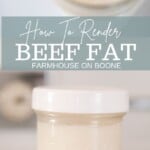
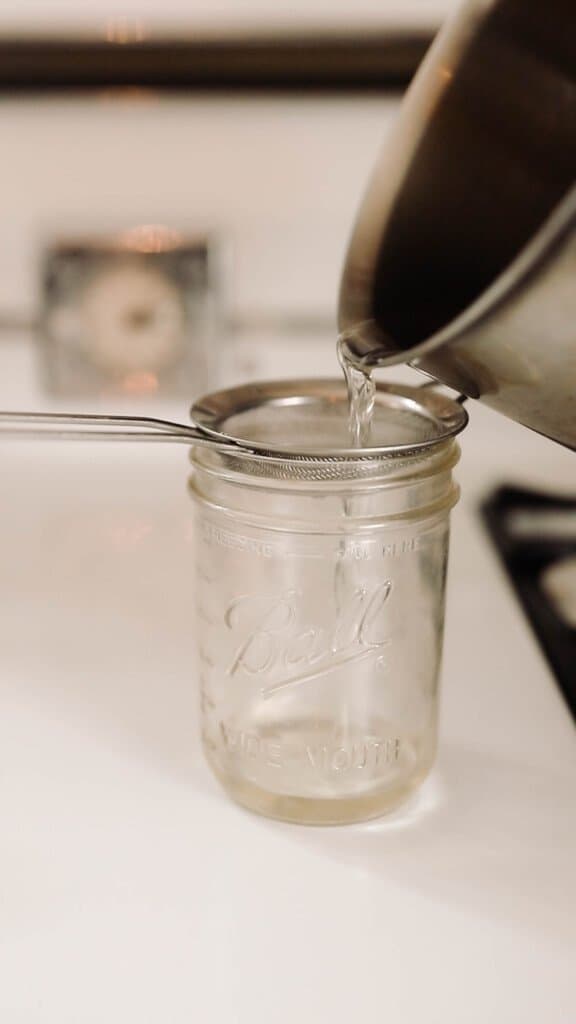
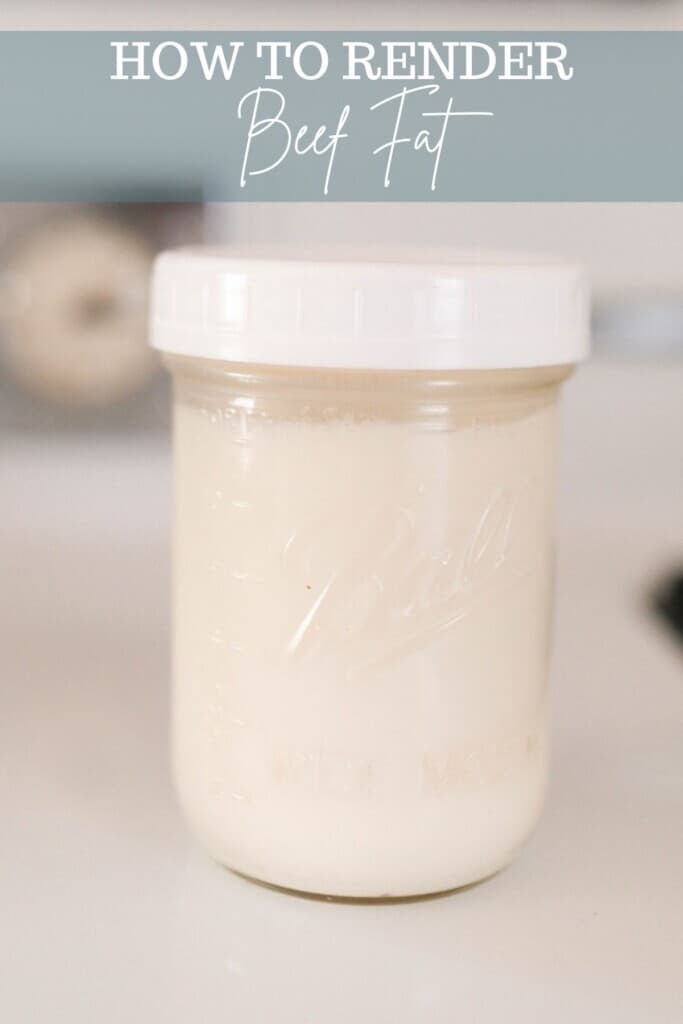
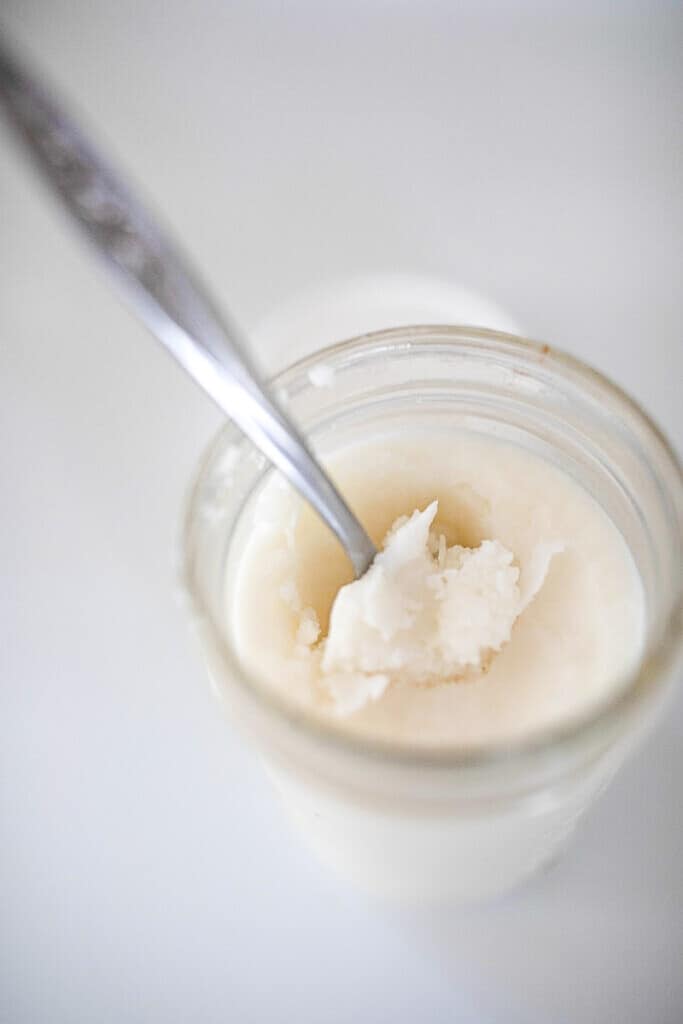
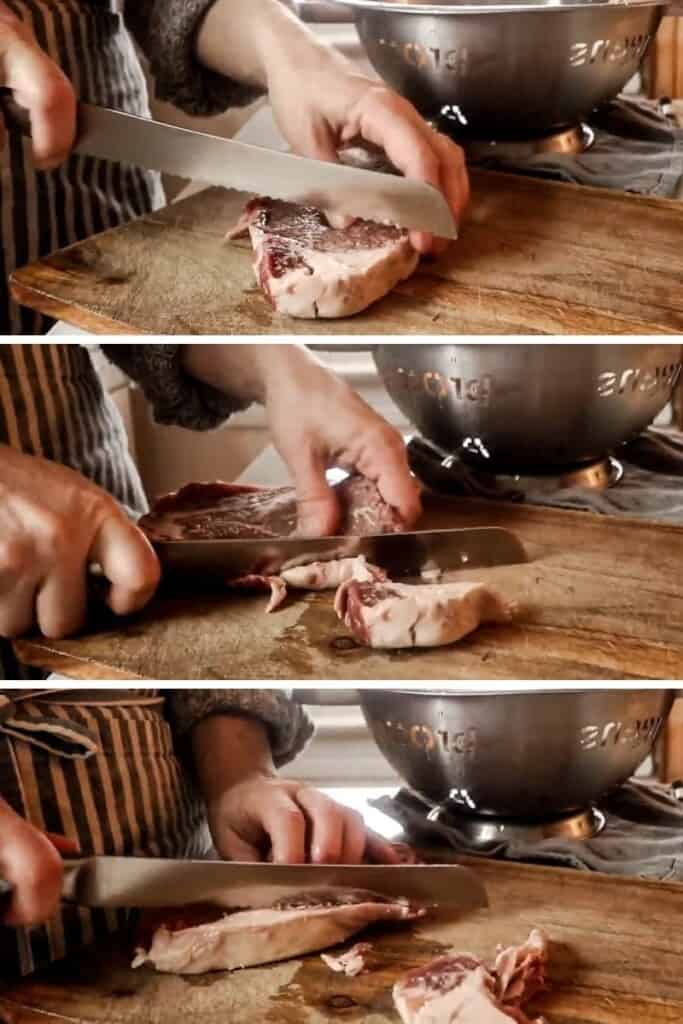
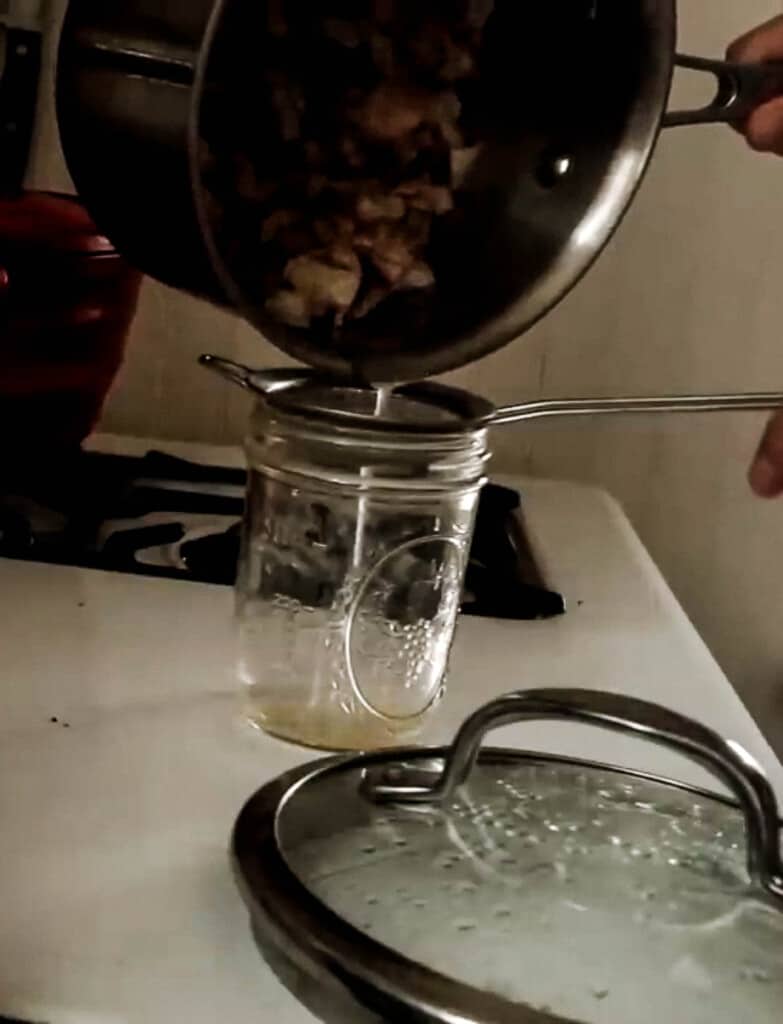
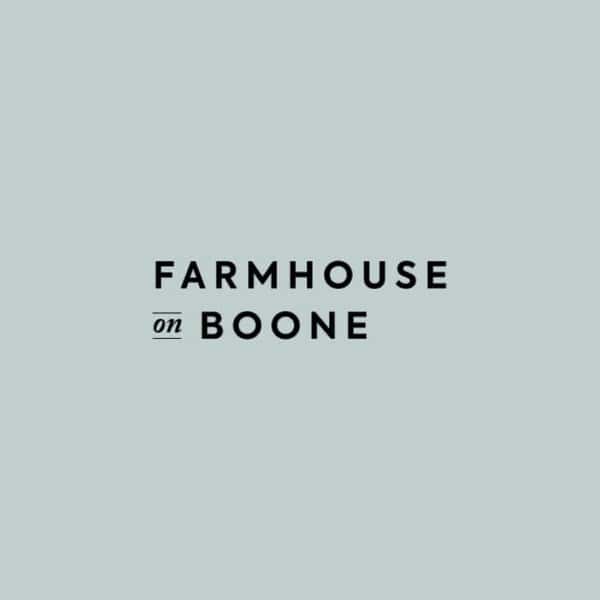









Can anyone tell me what to do with what is left after the tallow is strained out. I hate to throw it away
Use it as you would any fat for cooking. Grease your pans, sub for butter, make french fries in it! Make body butter for an awesome moisturizer! If you’re brave learn how to make soap and use it there!
I want to know about this also. I know when making lard you have cracklins left. But what can you do with what’s left of the beef?
Same question here. What to do with the leftover ’meat’ or whatever it is called. I was thinking of baiting a rat trap with it.
Can you keep adding fat to fat if its rendered to save storage?
Lisa, I tried this and it was very gamey smelling/tasting. Any tips or does it not bother the taste of whats being cooked with it?
The slower it is cooked, the less flavor there will be.
Can I do this in a crock pot too?
I have not tried this, but I am sure some folks use a crock pot and that there are some recipes online!
Looks great. Another way is to add to water and boil it. Let is cool a bit, remove the fat pieces and let it cool. The fat will solidify on the top of the water and you just break up the fat and pull out. Any chunks have settled to the bottom of the water. Then you also have some great beef broth.
Thanks for sharing this tip!
Wonderful !
Can this also be pressure canned like meat for later please?
What is the yeild per pound of fat?
Thank You my tallow is looking beautiful
can you do this in a crockpot
I have seen multiple recipes where they use a crock pot, I decided to go with the oven method because I had more to do than I could fit in me crock pot.